Formula C28H31ClN2O3 | Appearance red to violet powder | |
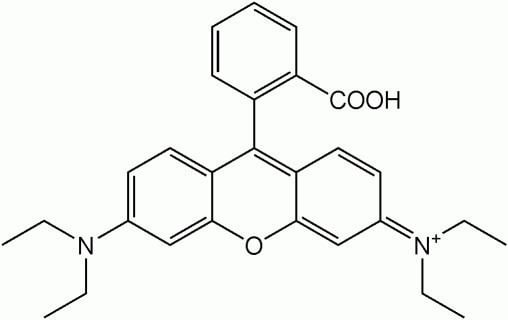 | ||
Rhodamine b
Rhodamine B /ˈroʊdəmiːn/ is a chemical compound and a dye. It is often used as a tracer dye within water to determine the rate and direction of flow and transport. Rhodamine dyes fluoresce and can thus be detected easily and inexpensively with instruments called fluorometers. Rhodamine dyes are used extensively in biotechnology applications such as fluorescence microscopy, flow cytometry, fluorescence correlation spectroscopy and ELISA.
Contents

Rhodamine B is used in biology as a staining fluorescent dye, sometimes in combination with auramine O, as the auramine-rhodamine stain to demonstrate acid-fast organisms, notably Mycobacterium.
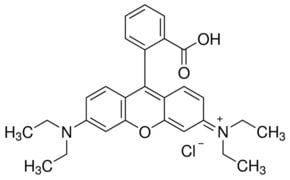
Rhodamine B is tunable around 610 nm when used as a laser dye. Its luminescence quantum yield is 0.65 in basic ethanol, 0.49 in ethanol, 1.0, and 0.68 in 94% ethanol. The fluorescence yield is temperature dependent.
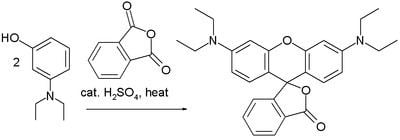
Solubility
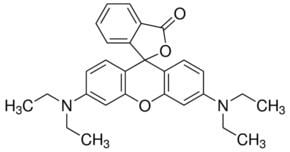
The solubility of rhodamine B in water is ~15 g/L. However, the solubility in acetic acid solution (30 vol.%) is ~400 g/L. Chlorinated tap water decomposes rhodamine B. Rhodamine B solutions adsorb to plastics and should be kept in glass.
Other uses
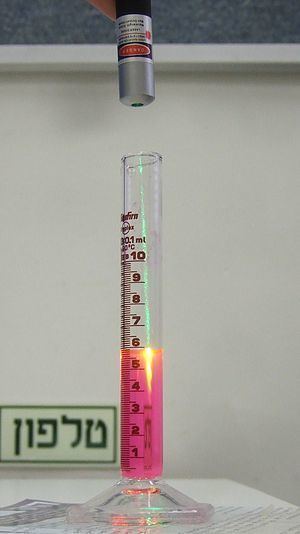
Rhodamine B is being tested for use as a biomarker in oral rabies vaccines for wildlife, such as raccoons, to identify animals that have eaten a vaccine bait. The rhodamine is incorporated into the animal's whiskers and teeth.
It is also often mixed with herbicides to show where they have been used.
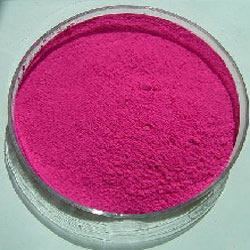
Rhodamine B (BV10) is mixed with Quinacridone Magenta (PR122) to make the bright pink watercolor known as Opera Rose.
Safety and health
In California, rhodamine B is suspected to be carcinogenic and thus products containing it must contain a warning on its label. Cases of economically motivated adulteration, where it has been illegally used to impart a red color to chili powder, have come to the attention of food safety regulators.
